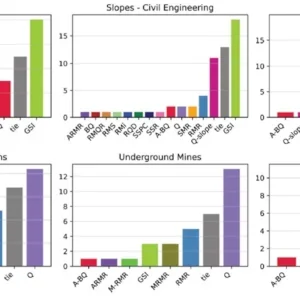The new FIDIC forms of contract recognise that many international construction contracts include significant elements of plant and machinery. Therefore, the style of the three main forms, the Red, Yellow and Silver Books, is essentially the same. This approach can be seen in particular in the way that liability for defects is dealt with.
Defective work is, by definition, work which fails to comply with the express descriptions or requirements of the contract. It includes, importantly, any drawings or specifications, together with any implied terms as to the quality, workmanship, performance or design. Defects constitute a breach of contract by the contractor that entitles the employer to claim damages. The employer is entitled to recover the financial cost of remedial works for defects carried out either by himself or another contractor. The contractor’s liability in damages is not limited except by clear words in the contract.
Standard forms of contract do not leave the employer with the remedy for damages only, and the FIDIC forms are no exception. The remedies available depend upon the particular period when the defect is discovered. There are three periods: the construction period; the defects notification period; and the post-correction period
The construction period
The construction period is between the dates of start and finish of the works, which is the date stated in the Taking Over Certificate issued by the Engineer (Red and Yellow) or employer (Silver) under Clause 10.1. The start date for construction is notified by the Engineer (Red and Yellow) or Employer (Silver) under Clause 8.1. He has to give not less than seven days’ notice of the start date.The notice must be given within 42 days after the contractor receives the letter of acceptance, unless the conditions state otherwise.
The FIDIC form provides two remedies for items of defective work discovered during construction, and provides two significant additional remedies where the works fail the tests on completion. The first main contractual remedy is the rejection and making good of the defective items, including re-testing and payment to the employer of any costs caused by the re-testing.
Under Clause 7.5 the plant, materials or workmanship may be rejected if found to be defective or otherwise not in accordance with the contract as a result of examination, inspection, measurement or testing. In both the Yellow and Silver forms, in which the contractor has design responsibility, the design may similarly be rejected. The contractor is required to be given notice with reasons for the rejection and is then required promptly to make good the defect and ensure the rejected item complies with the contract.
If tests are specified in the contract, the contractor may also be required to re-test the rejected items. If rejection and retesting cause the employer to incur additional costs, the contractor pays these costs according to the procedures in the contract (Clause 3.5), provided proper notice and particulars are provided to the contractor. The particulars are required to specify the clause or other basis of the claim and substantiation of the amount (Clause 2.5). The amount may be included as a deduction to the contract price and payment certificates, but the employer is only entitled to set-off or deduction or otherwise claim in accordance with Clause 2.5.
The second main remedy is the removal and replacement of the defective item or re-execution of the work.
Under Clause 7.6, the contractor may be required to remove from site and replace any plant or materials not in accordance with the contract, remove and re-execute any work not in accordance with the contract or execute urgent work. If the contractor fails to comply with such instruction, the employer is entitled to employ and pay others and the contractor is required to pay the employer the net costs due to the failure in accordance with Clause 2.5. The third main contractual remedy arises at the tests on completion and involves re-testing, but the requirement for re-testing may now be instigated by the contractor himself.
Under Clause 9.1, the contractor is required to carry out the tests on completion which, under the Yellow and Silver forms, are described as comprising pre-commissioning, commissioning and trial operation. If the tests fail, the items of work which fail may be rejected and made good and may need to be re-tested or the contractor may himself require the re-testing (Clause 9.3). Again, if the rejection and retesting cause the employer to incur additional costs, the contractor pays these costs in accordance with the procedures in the contract. In addition, the tests on completion may need to be repeated or the contractor may himself require the re-testing.
The fourth main contractual remedy arises if the repeated tests on completion fail and gives three options: A, B and C. Option A requires the contractor to carry out further repetition of the tests on completion. Option B is the most serious for the contractor and arises if the failure deprives the employer of substantially the whole benefit of the works. The works can then be rejected. In that case, the employer may terminate the contract as a whole or in respect of such major part which cannot be put to the intended use. Without prejudice to its other rights, the employer is entitled to recover all sums paid for the works or such part, plus financing costs and the cost of dismantling the same, clearing the site and returning plant and materials to the contractor (Clause 11.4(c)).
Option C allows a Taking Over Certificate to be issued if the employer so requests. In that case, the contract price is reduced by such amount as is appropriate to cover the reduced value to the employer as a result of the failure. Unless the relevant reduction is stated or the method of calculation defined in the contract, the employer may require the reduction to be agreed before issue of the Taking Over Certificate or determined and paid under clauses 2.5 and 3.5.
The FIDIC forms provide comprehensive remedies for defects during the construction period. The most radical remedies apply when there are tests on completion specified in the contract. The same approach is adopted in the defects notification period.
Defects notification period
This period starts on the date completed as stated in the Taking Over Certificate and the date stated in the performance certificate. Clause 11.9 provides that only the performance certificate is deemed to be acceptance of the works. The contractor’s obligations are not considered to be completed until the certificate has been issued stating the date on which the contractor completed his obligations. The certificate is required to be issued within 28 days of the expiry date of the defects notification period or as soon thereafter as the contractor has supplied all the contractor’s documents and completed and tested all the works and remedied defects. During the defects notification period, the FIDIC forms give the contractor a right of access to the works as is reasonably required, except as may be inconsistent with the employer’s reasonable security restrictions.
Under Clause 11.1(a), the contractor is required to complete any work outstanding on the date in the Taking Over Certificate within such reasonable time as is instructed.
The contract gives the employer three possible contractual remedies. The first is under Clause 11.1. The contractor is required to be notified if a defect appears or damage occurs. The contractor under Clause 11.1(b) is required to execute all work required to remedy defects or damage notified on or before the expiry date of the defects notification period. The remedial work is required to be carried out so that the works and the contractor’s documents shall be in the condition required by the contract by the expiry of the defects notification period or as soon as practicable thereafter.
|
“Without prejudice to its other rights, the employer is entitled to recover all sums paid for the works . . .” |
This procedure is therefore a means of identifying and remedying defects which were latent during the construction period. The key phrase is ‘as soon as practicable’. The contractor can argue that this requires consideration to be given to the economics of mobilising for remedial works and that it would not be practicable to mobilise separately for remedial works as and when they are identified by the Engineer.
The employer, however, may argue that, if defects are affecting his use of the facility, this is exactly what is envisaged by the phrase. It is suggested that what is important to identify is indeed the effect on the employer’s operation or safety. If the effect is significant, the employer’s needs become paramount, otherwise not.
Clause 11.2 provides that remedial work is at the cost and risk of the contractor if attributable to:
The second contractual remedy arises if the works or a major item of plant after taking over cannot be used for the purpose for which they were intended by reason of a defect or damage. The employer is entitled to an extension of the defects notification period, subject to Clause 2.5. The period cannot be extended by more than two years.
The third contractual remedy arises if the contractor fails to remedy any defect or damage within a reasonable time (Clause 11.4). In that case, the employer may notify the contractor of a date for remedy by giving the contractor reasonable notice. If the contractor fails to remedy the defect or damage by the notified date and the remedial work was to be at his cost under Clause 11.2, the employer has three options.
First, he can carry the work out himself or others may be used at the cost of the contractor. Subject to Clause 2.5, the contractor pays the employer the reasonable cost so incurred. Second, the employer can have determined a reasonable deduction in the contract price in accordance with Clause 3.5. Third, the employer may terminate the contract as a whole or in respect of such major part that cannot be put to the intended use if the defect or damage deprives the employer of substantially the whole benefit of the works. Without prejudice to its other rights, the employer is entitled to recover all sums paid for the works or such part, plus financing costs and the cost of dismantling the same, clearing the site and returning plant and materials to the contractor.
Post-correction period
The post-correction period starts with the date in the performance certificate. The contractor’s right of access to remedy defects ends on the issue of the certificate.
The extent of the employer’s remedies for any latent defects which appear after the date of the performance certificate will depend on the extent of the conclusive effect of the certificate. Clause 11.10 states that, after the issue of the performance certificate, each party remains liable for the fulfilment of any obligation that remains unperformed. It is suggested that the intention is not to reduce the contractor’s liability for latent defects but that this will depend on the applicable law. The certificate is therefore only of administrative effect and particularly in relation to the application for final payment.
Remedies for defects
A defect is a breach of contract by the contractor which entitles the employer to claim damages.
The FIDIC Red, Yellow and Silver forms provide a comprehensive range of contractual remedies for the construction period and the defects notification period. The performance certificate does not exclude the employer from remedies for latent defects, subject to the applicable law.






